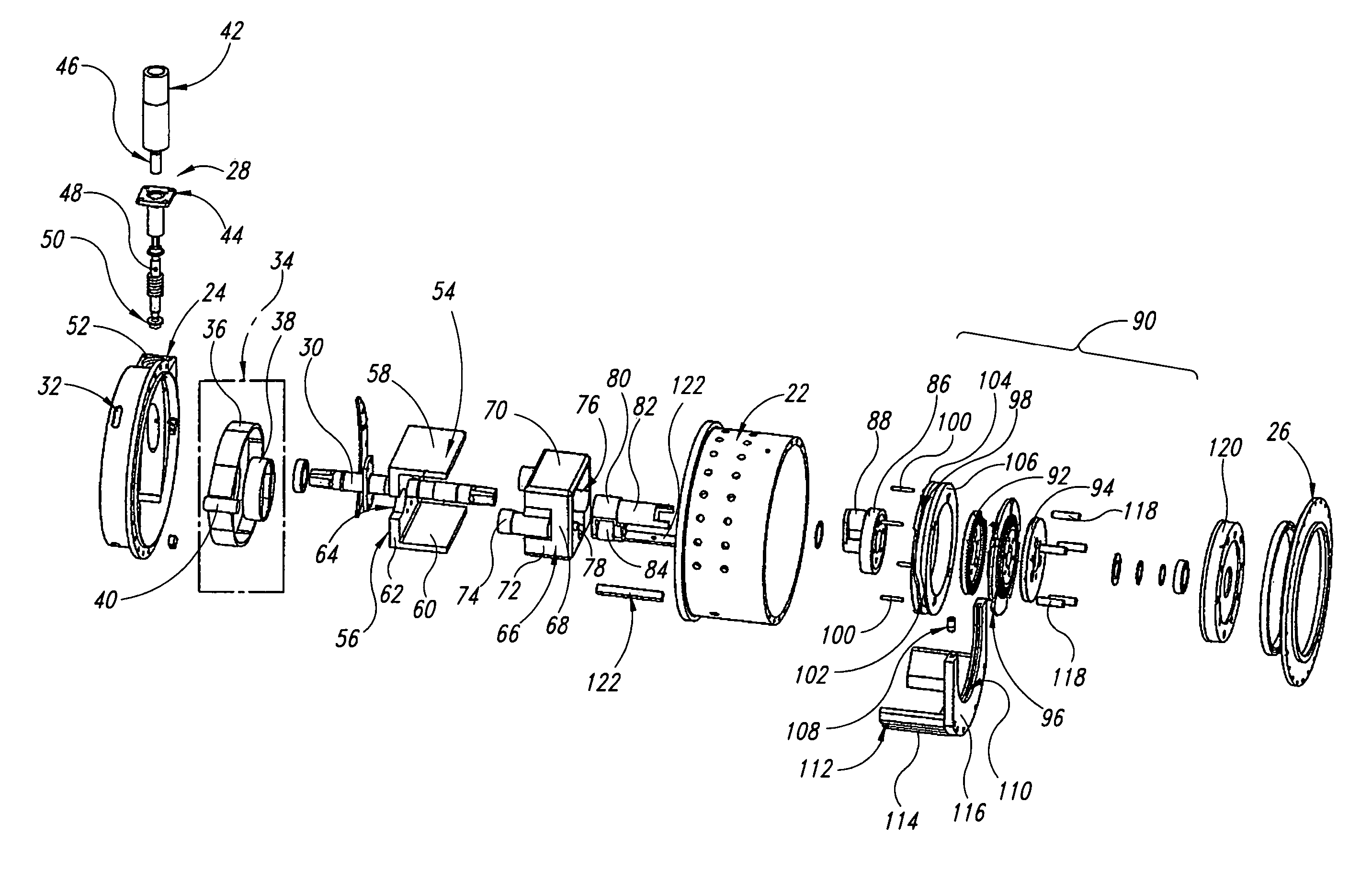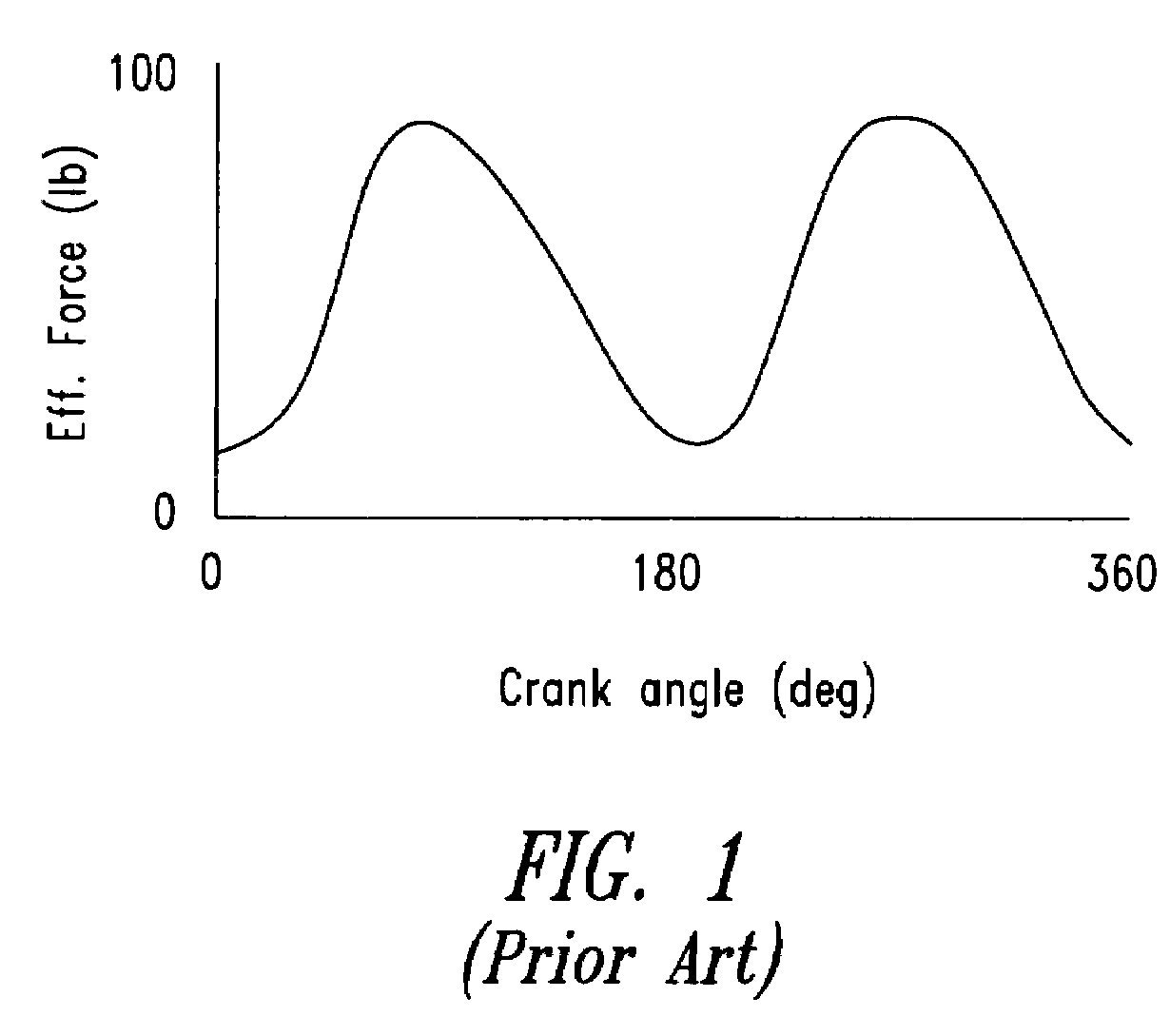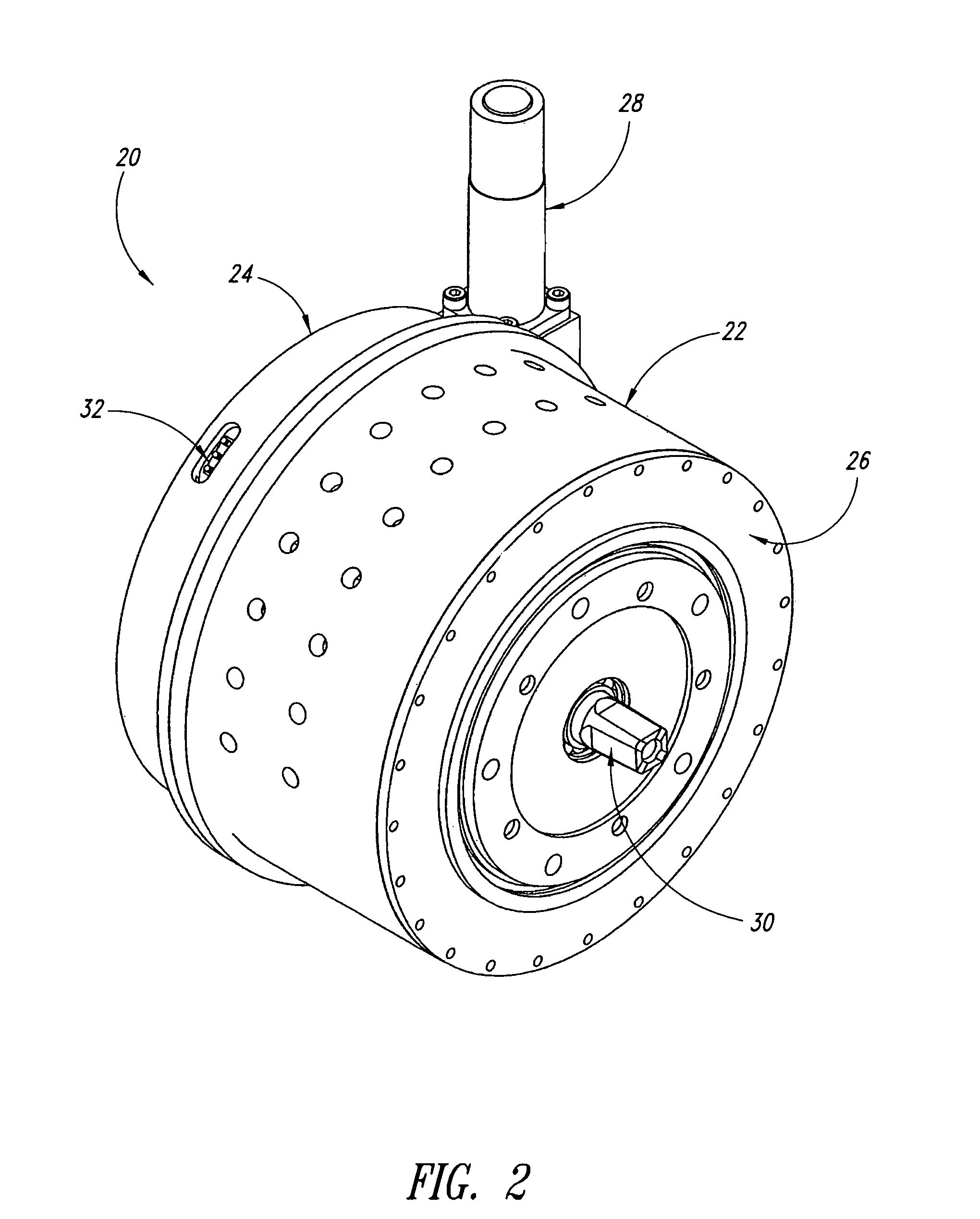Continuously variable transmission
a transmission and continuously variable technology, applied in the field of transmission systems, can solve the problems of increasing torque, reducing efficiency, and not using traction drives, and achieves the effects of reducing apparent effects, facilitating manipulation of subjective feelings of the rider to the transmission, and high efficiency
- Summary
- Abstract
- Description
- Claims
- Application Information
AI Technical Summary
Benefits of technology
Problems solved by technology
Method used
Image
Examples
Embodiment Construction
[0058]The disclosed embodiments of the present invention are suited for human-powered vehicles, such as bicycles, having a rotary input. It is to be understood that while the embodiments of the invention are described in the context of human-powered bicycles, they will have application to other devices receiving rotary input in the form of the approximately sinusoidal input force depicted in FIG. 1.
[0059]All of the embodiments of the present invention function as a full-wave rectifier, the clutch acting as the rectifying elements and smoothing out the pseudo-sinusoidal torque input at each complete cycle of applied torque that is generated by one stroke of a human prime mover. In one embodiment, concentric shafts counter-rotate with respect to each other by the action of a shuttle or rocker arms reacting to the motion imposed on them by a cam interacting with cam followers. The clutches on the output ends of the concentric shafts only transmit motion in one direction (forward) there...
PUM
 Login to View More
Login to View More Abstract
Description
Claims
Application Information
 Login to View More
Login to View More - R&D
- Intellectual Property
- Life Sciences
- Materials
- Tech Scout
- Unparalleled Data Quality
- Higher Quality Content
- 60% Fewer Hallucinations
Browse by: Latest US Patents, China's latest patents, Technical Efficacy Thesaurus, Application Domain, Technology Topic, Popular Technical Reports.
© 2025 PatSnap. All rights reserved.Legal|Privacy policy|Modern Slavery Act Transparency Statement|Sitemap|About US| Contact US: help@patsnap.com



